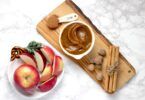Understanding the relationship between diet and exercise-related injuries is crucial for optimizing your physical performance and minimizing the risk of injuries. The food we consume plays a significant role in supporting our body’s ability to recover, strengthen, and endure physical activity. In this article, we will explore how diet directly influences exercise injuries and discover effective strategies to promote injury prevention and recovery.
Exercise injuries are an unfortunate reality for many individuals engaged in sports and physical activities. While certain injuries may not be entirely preventable due to factors like overtraining or inadequate coaching, the role of diet should not be overlooked. While diet alone may not always prevent an injury, it can play a significant role in minimizing recovery time and supporting the body’s healing process. In this article, we will delve into the relationship between diet and exercise injuries, exploring how proper nutrition can aid in post-injury recovery and overall injury prevention.
How does diet affect exercise injuries?
Maintaining a balanced and nutritious diet serves as a crucial preventive measure in reducing the risk of exercise injuries. When athletes or trainees fail to consume the right kind of food, such as low-energy or nutrient-deficient meals or have reduced carbohydrate intake and suffer from dehydration, their susceptibility to injuries increases.
Making poor dietary choices can also contribute to chronic conditions like iron deficiency or decreased bone density. It is essential to ensure an adequate intake of vitamins, minerals, and macronutrients throughout the day to support overall health and prevent injuries.
Hydration is another critical aspect that athletes should prioritize. Dehydration, which reaches 2% of the total body weight (e.g., 1.4 kg loss of fluids for a 70 kg athlete), poses health risks and impairs athletic performance. Optimal hydration before exercise is crucial, with guidelines suggesting the consumption of 400-600 ml of liquid 2-3 hours prior to training. During exercise, a regular intake of 150-350 ml of liquid every 15-20 minutes is recommended. After the workout, replenishing 150% of the weight lost in fluids is necessary.
Female athletes, in particular, must consider additional factors. In sports like Aerial Hoop, Aerial Silks, Pole Dancing, and Gymnastics, where weight restrictions are common, athletes may inadvertently reduce their daily food intake, leading to increased injury risks, eating disorders, menstrual irregularities, and low bone density (known as the female triad).
By recognizing the profound impact of diet on exercise-related injuries and paying attention to proper nutrition and hydration, athletes can optimize their performance, reduce the likelihood of injuries, and support their overall well-being.
Optimum Recovery: Advice for a Speedy Healing Process
Focus on Energy Balance
To support your body’s recovery from an injury, it’s crucial to ensure an adequate calorie intake. Consulting with a dietician-nutritionist can help you determine your daily energy requirements and create a personalized plan.
Emphasize Food Variety
Incorporate a wide range of nutritious foods into your diet. Include plenty of fruits, legumes, and vegetables. Opt for small, frequent meals that consist of high-quality protein sources (such as eggs, fish, chicken, meat, and dairy products) in quantities of 1.2-1.7 g/kg of your body weight. Also, include complex carbohydrates (such as quinoa, buckwheat, brown rice, and whole wheat pasta) and healthy fats. Keep your fat intake within 25-30% of your daily energy needs. Choose fats rich in anti-inflammatory Omega-3 fatty acids, like oily fish (salmon, sardines), avocado, walnuts, olive oil, and flaxseed oil.
Avoid Processed Foods
Steer clear of processed foods such as fast food, croissants, biscuits, and pizza. These foods are often high in unhealthy fats, sugars, and additives that can hinder the healing process.
Optimal Restoration Foods
Include foods in your diet that promote optimal recovery. Look for foods rich in anti-inflammatory properties, iron, antioxidants (such as vitamin C, selenium, zinc, and vitamin E), amino acids, polyphenols, carotenoids, and other beneficial nutrients. Some examples include apricots, lime, plums, lemons, oranges, carrots, sweet potatoes, tomatoes, kale, spinach, cherries, berries, pomegranate, peppers, buckwheat, green tea, grapes, broccoli, various spices (especially turmeric and saffron, which are rich in antioxidants), fish, thyme, rosemary, eggs, lean meat, parsley, chia seeds, flaxseed, and nuts.
Indicative Recovery Meals: Here are some meal ideas to aid in your recovery process:
- Low-fat yoghurt with oats, berries, and honey
- Salmon and kale sandwich
- Lentil soup with buckwheat and green pepper
- Chicken seasoned with rosemary served with turmeric rice
- Almond milk with rice flakes, chia seeds, and a glass of orange juice
By focusing on energy balance, consuming a diverse range of nutritious foods, avoiding processed options, and incorporating foods that support the optimal restoration, you can provide your body with the necessary nutrients to aid in a speedy recovery. Remember to consult with a healthcare professional or nutritionist for personalized dietary advice based on your specific needs.








Great advice.
Thank you! We’re glad you found the advice helpful. Our goal is to provide practical and useful tips to our readers, so it’s great to hear that you found value in the advice shared. If you have any specific questions or if there’s anything else we can assist you with, feel free to let us know. We’re here to help!